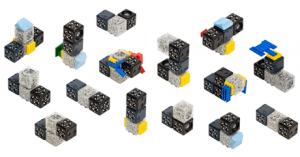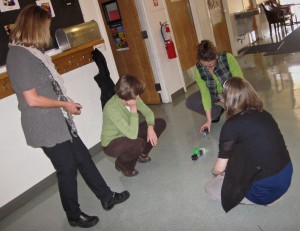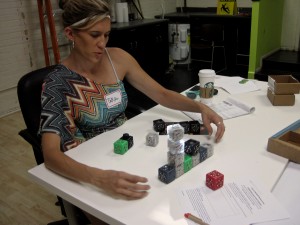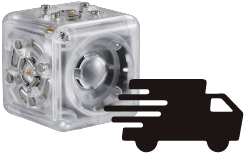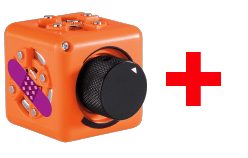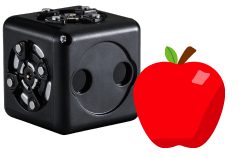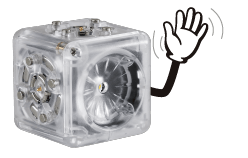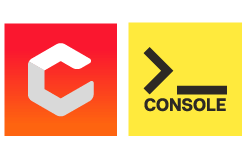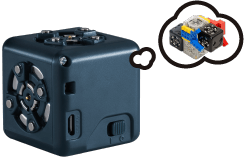Recently, I worked with a really cool and diverse group of teachers and librarians at Colorado RAFT Teacher Symposium. When I was approached to do this and heard it was a three hour workshop, I was unconditionally thrilled. A whole morning with creative teachers who are invested in hands-on education (why else would they be involved with RAFT?) and Cubelets? Pick me.
Others expressed doubts – what will you do with them for three hours? Won’t you get tired? Won’t they get bored?
I’ve been doing fast-and-snappy teacher professional development workshops since April and had some practice laps in, so I felt ready. For me, the key is paying attention to what teachers want, what they need, and determining where we can fit in.
After my first time offering teachers a chance to play with Cubelets, I remember being psyched with how little time it took adults to stoop down on their hands and knees in order to build driving, racing robots. I have a background in training instructors, so I wasn’t nervous to train a room of teachers; but I was pleased to witness that the level of active curiosity I see with kids and Cubelets bubbles up in adults too.
Offering more teacher professional development workshops wasn’t only good practice for me, it meant I learned more specifics about what teachers want. I heard teachers commenting that educators need to talk about STEAM, not just STEM. (The ‘A’ is for Arts. And after all, engineers design and make. And that does lead right back to the arts.) I listened well when teachers said they needed clever ways to teach cause and effect. I paid attention when teachers mentioned how popular robotics was in STEM right now, and how hard it is to find an options that will “start kids off” before engaging with robotics kits that require programming.
Most memorably, on my third try at teacher professional development, I heard some teachers who had not been in my workshop gabbing in the hall. They didn’t know I was behind them and said, “The last thing I want as a teacher is someone who hasn’t had to do it in the classroom trying to tell me how something will go with my students as a way of hard selling me.”
YUP! Iloathe the “hard sell” approach. I’d hate it even more if someone tried to tell me what would and wouldn’t work in my classrooms without having any experience with any students, much less my students.
For this reason that I do my best to test each and every lesson plan idea I have on real students. I do this not because I want to have a more convincing sell to teachers, but rather, because I want our lesson plans to impart real, use-in-your-classes value when teachers, camps, and schools do buy Cubelets.
Bonus: this frees me up to do what works anyways – let the Cubelets do the talking! I jabber for just a few minutes and then focus on listening to good educator ideas and facilitating teachers to play and learn. In short, I’m back to seeing how fast I can get teachers playing, letting their inner-child bring out their creativity and mixing it with their expertise about what their students, classrooms, and schools need.
I often find that people (of all ages) gain deeper comprehension of “what do they do” once they have their hands on Cubelets, than if I stand, demo, and talk about them. It’s not that questions don’t come up. Of course they do! But answering them is far easier and more enjoyable when people can try things out live. Teachers especially want to see things in action.
For this three hour session I saw teachers on their hands and knees playing with their robots. I saw art teachers making robots, and then hastily and creatively constructing environments for their robots. I saw teams of educators making robots that react to other robots and dubbing it, “the robot dance party. “ I had teachers joke that they were using the “force” (Distance Cubelet) to control driving robots and comment on how kids could see this as magic, but then investigate what was causing that “magic.”
More substantially I heard teachers ask (and answered):
“I want something for teens and tweens to do that will inspire them to use technology for more than texting and Youtube.”
We’re really interested in students gaining intuitions about systems, logic, and computational thinking in tangible, immediate ways that give them feedback so that they can more confidently take on wanting to engineer, design, or write code in abstract ways.
“I want my art students to think about design like this.”
We love seeing students (and teachers!) design by pulling things apart and re-configuring them so fast they almost don’t have time to articulate their plan!
“Can I ask you more about emergent behavior? When I hear “behavior” I think of the students’ behaviors in class but as I’m making this robot, I think you mean something different.”
This was one of my favorite questions to answer! “Because each Cubelet has exactly one function people often think the way to track ‘how many’ they can make has to do just with the counting (or combinatorics) of each Cube, function, or the faces on the Cubelets. But sometimes as you’re adding functions and the Cubelets are sending and receiving information from more than one other Cubelet, behaviors emerge that you didn’t plan or design. It’s what makes people refer to Cubelets robots as animals or people-like even though they are the least android-looking robots I’ve ever seen.”
“These robots are different from other robots, aren’t they? There’s no brain pieces – they are all sharing data.”
Yes! Cubelets robots are a distributed system. That sounds technical. Another way to say it is that every component is parallel and “talks” directly to one another. Imagine if your foot was connected directly to your ears, with no brain mediating sensory information or reactions.
“What’s the youngest you’ve seen students ‘get it’ with these?”
I’ve seen a child who wasn’t yet 3 years old build sense-act robots successfully and ask me enough questions to use ALL of the senses and actions!
“What’s the oldest you’ve seen students still stay motivated and engaged with Cubelets?”
We know that the shape and colors of Cubelets gives them the gross-motor, young child, Pre-K look. Pre-schoolers can “get it” with minimal support and the right set-up. But as older students get their hands on Cubelets, they too get it, and add layers of sophistication, posing their own questions and challenges, and then setting themselves up to construct the right investigation to answer themselves. Quite simply, I’ve been amazed with what students do with Cubelets from ages not-yet-three up to 18!
“Do you think this could be used for Special Ed science?”
Yes! Since I’ve seen kids from Pre-K all the way up to 12th grade work with Cubelets in developmentally appropriate ways, I could easily find the point on that continuum that your Special Ed student(s) matched up with and make adjustments that would make a Cubelets Lesson plan work!
But mostly what I heard was “Come look at what I made!”
Not that different from what happens when I pack up Cubelets and take them into schools and camps full of kidos! Lots of excitement and discovery – not surprising. After all, all the best educators I know work with students because they found ways to learn enjoyably and wanted to pass it on. Of course these same people know how to locate their inner-excited-student!
